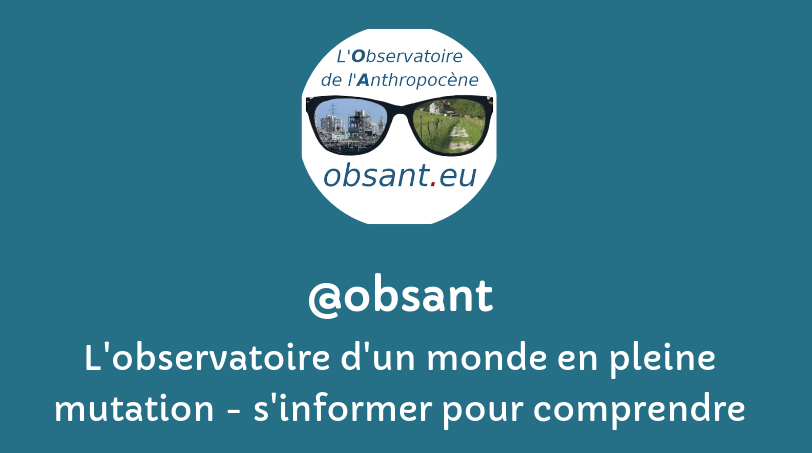Les champs auteur(e)s & mots-clés sont cliquables. Pour revenir à la page, utilisez le bouton refresh ci-dessous.
filtre:
degradation
EU officials warn climate breakdown and wildlife loss ‘are ruining ecosystems that underpin the economy’ […] The European way of life is being jeopardised by environmental degradation, a report has found, with EU officials warning against weakening green rules. The continent has made “important progress” in cutting planet-heating pollution, according to the European Environment Agency, but the death of wildlife and breakdown of the climate are ruining ecosystems that underpin the economy.
Nonylphenol is a toxic xenobiotic compound classified as an endocrine disrupter capable of interfering with the hormonal system of numerous organisms. It originates principally from the degradation of nonylphenol ethoxylates which are widely used as industrial surfactants. Nonylphenol ethoxylates reach sewage treatment works in substantial quantities where they biodegrade into several by-products including nonylphenol. Due to its physical–chemical characteristics, such as low solubility and high hydrophobicity, nonylphenol accumulates in environmental compartments that are characterised by high organic content, typically sewage sludge and river sediments, where it persists.
Land degradation is a complex socio-environmental threat, which generally occurs as multiple concurrent pathways that remain largely unexplored in Europe. Here we present an unprecedented analysis of land multi-degradation in 40 continental countries, using twelve dataset-based processes that were modelled as land degradation convergence and combination pathways in Europe’s agricultural (and arable) environments. Using a Land Multi-degradation Index, we find that up to 27%, 35% and 22% of continental agricultural (~2 million km2) and arable (~1.1 million km2) lands are currently threatened by one, two, and three drivers of degradation, while 10–11% of pan-European agricultural/arable landscapes are cumulatively affected by four and at least five concurrent processes. We also explore the complex pattern of spatially interacting processes, emphasizing the major combinations of land degradation pathways across continental and national boundaries. Our results will enable policymakers to develop knowledge-based st
The EU Observatory on deforestation and forest degradation aims to monitor changes in the world’s forest cover and related drivers. Besides providing access to global forest maps and spatial forest and forestry-related information, this Observatory will facilitate access to scientific information on supply chains, linking deforestation, forest degradation and changes in the world’s forest cover to Union demand for commodities and products. Data and information provided on this Observatory play a supporting role but do not assure compliance or imply non-compliance with EU Regulations, other legal frameworks or commitments, or international agreements.
The fate, effects, and treatment of per- and polyfluoroalkyl substances (PFAS), an anthropogenic class of chemicals used in industrial and commercial production, are topics of great interest in recent research and news cycles. This interest stems from the ubiquity of PFAS in the global environment as well as their significant toxicological effects in humans and wildlife. Research on toxicity, sequestration, removal, and degradation of PFAS has grown rapidly, leading to a flood of valuable knowledge that can get swamped out in the perpetual rise in the number of publications. Selected papers from the Journal of Hazardous Materials between January 2018 and May 2022 on the toxicity, sequestration, and degradation of PFAS are reviewed in this article and made available as open-access publications for one year, in order to facilitate the distribution of critical knowledge surrounding PFAS. This review discusses routes of toxicity as observed in mammalian and cellular models, and the observed human health effects i
Climate change affects the Arctic and sub-Arctic regions by exposing previously frozen permafrost to thaw, unlocking soil nutrients, changing hydrological processes, and boosting plant growth. As a result, sub-Arctic tundra is subject to a shrub expansion, called “shrubification”, at the expense of sedge species. Depending on the intrinsic foliar properties of these plant species, changes in foliar mineral element fluxes with shrubification in the context of permafrost degradation may influence topsoil mineral element composition. Despite the potential implications of changes in topsoil mineral element concentrations for the fate of organic carbon, this remains poorly quantified. Here, we investigate vegetation foliar and topsoil mineral element composition (Si, K, Ca, P, Mn, Zn, Cu, Mo, V) across a natural gradient of permafrost degradation at a typical sub-Arctic tundra at Eight Mile Lake (Alaska, USA). Results show that foliar mineral element concentrations are higher (up to 9 times; Si, K, Mo for all spec
Habitat degradation, low genetic variation and declining fertility are setting Homo sapiens up for collapse
Several terms have been used to describe the negative mental health implications of environmental degradation, including ecological grief, solastalgia, climate and eco-anxiety. The American Psychological Association defines eco-anxiety as a “chronic fear of environmental doom”. Some psychiatrists describe this as an anticipated trauma or a “pre-traumatic stress disorder”.
Generating three centimeters of top soil takes 1,000 years, and if current rates of degradation continue all of the world's top soil could be gone within 60 years, a senior UN official said
It is hard to believe it’s happening again, even harder to believe that so few people seem to know or care. A massive famine is unfolding in Tigray in northern Ethiopia. Five million people are in need of food aid, and perhaps 900,000 are already starving.
![]()



